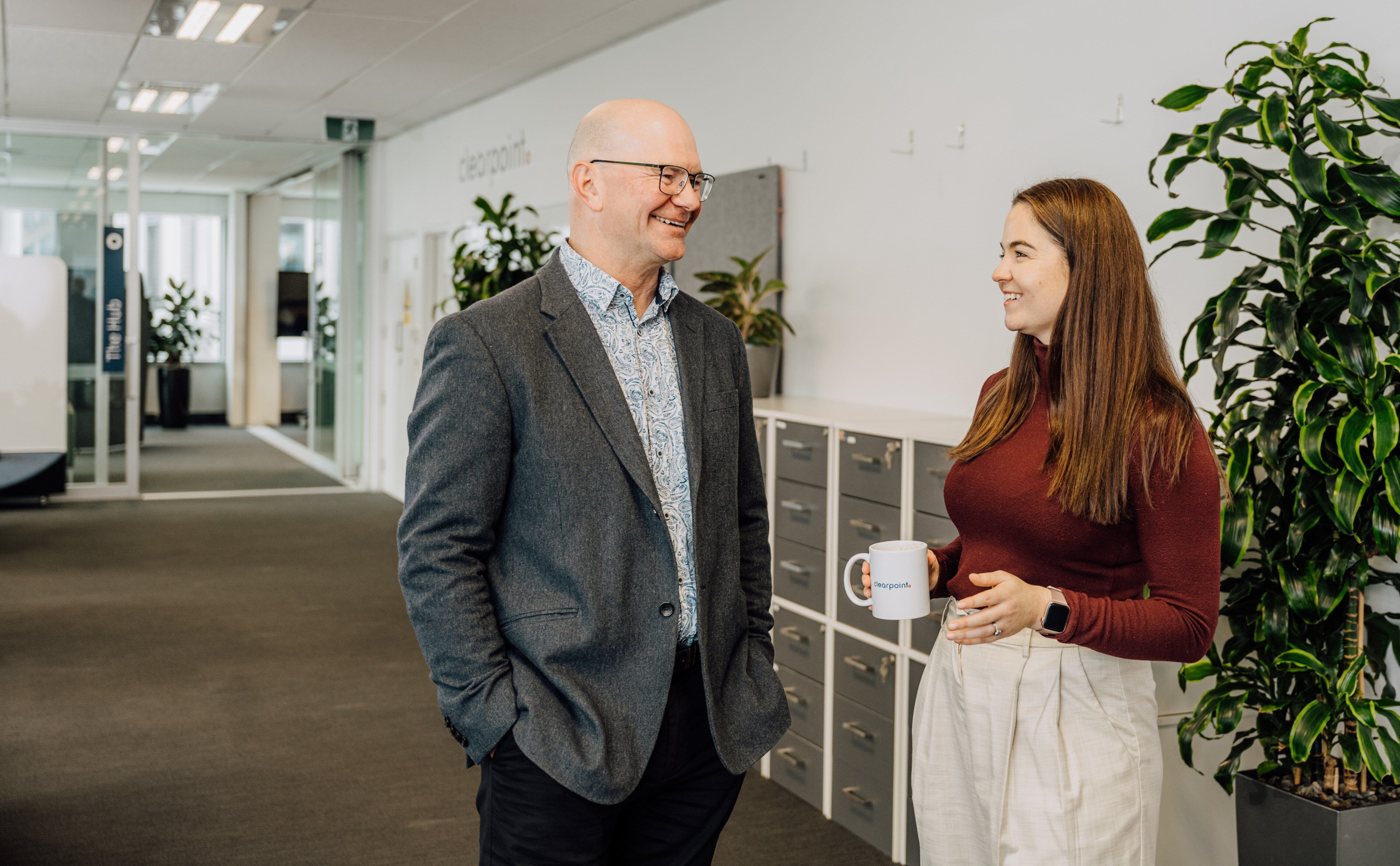As we begin the 2025 working year, ClearPoint business leaders and domain experts reflect on the last 12 months, sharing their view on the trends, opportunities and learnings already seen, and what to expect as we look to the year ahead. Watch the full insights video here.
Over the last 12 months, we’ve seen significant shifts across the industry as AI adoption accelerates, businesses optimise for efficiency amid economic challenges, and foundational digital strategies are put in place.
With 2024 being a year of cautious yet optimistic innovation and groundwork, 2025 looks to build on these with a renewed confidence for business leaders as we enter the new year and expectations for activity picking back up in the digital transformation space.
Similarly to last year, AI has remained a key focus within modern engineering and product development – with the maturity in teams’ utilisation of these tools growing across the board.
“We’re seeing these models get more powerful month by month,” says Rob Cleghorn, CTO at ClearPoint. “We’re building a lot more software using AI, it’s cool to see how effective we can be and how much more you can achieve with a small team.”
This sentiment echoes across teams, as tools like AI coding assistants enable engineers to deliver faster and with greater accuracy. The use of AI for application modernisation, particularly, is enabling organisations to address legacy code and reduce risks, often at a lower cost than traditional methods.
“After organisations deploy these tools and trust grows, we’re starting to hear them ask, ‘What next?’” says Malen Hurbuns, GM Engineering.
Large language models (LLMs) are anticipated to move into architectural roles, replacing some microservices, and small language models are also gaining traction – offering more specific solutions, and in turn, a difference in when each model is used for the most relevant outcomes.
Enhanced capabilities in tools like Figma and Miro are breaking down silos, fostering better collaboration between designers, developers, and product leaders.
“What we’re seeing is that AI provides tools that enables designers to actually generate code for the things that they're making, and vice versa, enables developers to use design systems just by asking the AI,” says Dan Cornwall, GM Design at ClearPoint.
“It’s allowing closer connection and understanding between different teams across a business, and democratises so that we're all working on stuff together as opposed to like little specialist silos.”
While AI enables the rethinking of how businesses operate and innovate, and ‘doing more with less’ continues to be a significant theme across the market, enabling a high performance team is central to its success.
“ There's a whole lot of 101 basics that you need to do well in software engineering to be high performing, and AI is not an excuse to not do those,” says Rob.
Software engineering processes, including automation and pipeline optimisation, need to be in place to keep teams safe as they move with speed.
“As exciting as it all is, if you get the basics right, and then add AI into the mix – you’ll be able to move even faster, and be in good stead to go forward with whatever is coming, which is nothing but more,” he says.
At ClearPoint, we utilise best in class engineering approaches that help your business adapt to change faster whilst maintaining a high level of quality through automation and safer practices. Find out how we work with your business to deliver on your desired outcomes.
While some sectors remained busy and focused on new initiatives right through, for others, the macroeconomic challenges shaping 2024 provided a chance for business to slow down and get the groundwork right.
Many businesses looked inward to optimise ways of working and ensure any digital initiatives being prioritised remained consistent with business strategy and changing market demands.
"I've seen the real need to look inside your business and find efficiencies in the way that you're operating, but also to understand how to get better outcomes from some of your digital initiatives,” says Marie Tamplin, Business Development Director at ClearPoint.
Looking ahead, 2025 is poised to bring a renewed wave of confidence in business, with the foundations set over the last 12 months putting organisations in a good place to revitalise larger digital initiatives.
“Some of the work we saw happen in 2024 around stabilisation, tackling linger tech debt, de-risking systems and addressing skill gap shortages will continue on into 2025 and obviously sets organisations up really well," says Mary-anne Stuart-William, Consulting Account Executive at ClearPoint.
“As we move through the year, I think we’ll start seeing bigger projects take hold again, particularly in the digital transformation space.”
Moving out of what was a tentative year for many, the industry is already beginning to see some of that activity pick up. This renewed activity signals a positive shift, as organisations prepare to invest in growth and innovation.
“I think with the geopolitical and macroeconomic environment over the last few months, we’ll start to see significant capital flowing, we’ll see more M&A activity driving business, and with that capital flowing, we’ll see activity pick up in the digital transformation space,” says Paul Scott COO at ClearPoint.
“We are already seeing a restart in that space, with organisations fleshing out business cases and doing early stage discovery to get started.
“I think we’ll see the technology and digital industries in New Zealand and globally really flourish this year. I'm certainly seeing positive signs and thinking it'll be a fantastic two to three years for the technology industry.”
Find out how ClearPoint can work with your organisation help you achieve greater efficiency, adaptability, and success in your digital initiatives.




